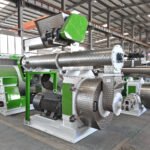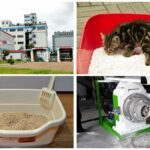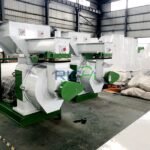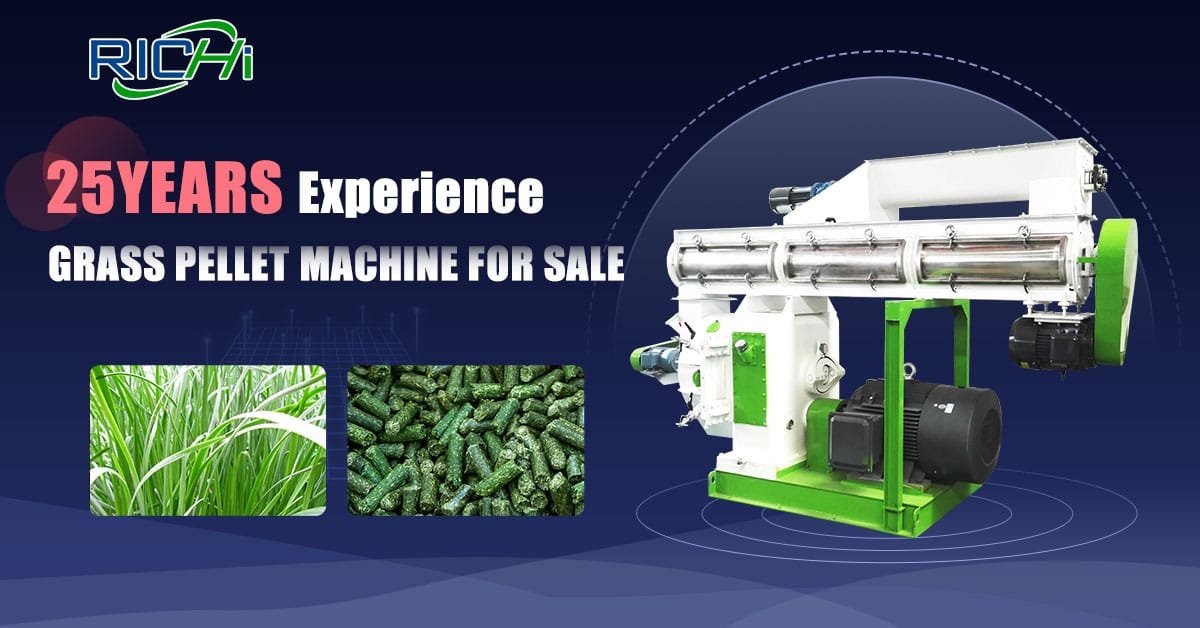The demand for efficient and sustainable livestock feed production has led to significant advancements in the technology used in alfalfa pellet making machines. As the global agricultural industry continues to evolve, the need for innovative solutions that improve feed quality, energy efficiency, and production capacity has driven manufacturers to develop cutting-edge technologies. In this article, we will explore the technological innovations in alfalfa pellet making machines, the role of automation and smart systems in optimizing production, and the future trends in this rapidly developing field.

1. Understanding the Evolution of Alfalfa Pellet Making Machines
A. From Simple Mechanisms to Advanced Systems
Alfalfa pellet making machines have come a long way from their initial designs, which were basic manual machines that lacked automation and required a high degree of operator involvement. Over time, innovations in mechanical design, materials handling systems, and energy efficiency have led to the development of more sophisticated and automated systems that offer higher capacity and lower operational costs.
B. Integration of Automation in Pelletizing Technology
One of the most significant advancements in alfalfa pellet production has been the integration of automation into pelletizing systems. Modern machines now incorporate automated feeding systems, precise temperature control, and pressure regulation, which have greatly improved the quality and consistency of the pellets. Automated systems reduce the need for manual labor, lower the risk of human error, and enhance the overall efficiency of pellet production.
2. Energy Efficiency: A Key Focus in Modern Pelletizing Systems
A. Reducing Energy Consumption in Pellet Production
Energy costs are a significant factor in the operation of alfalfa pellet making machines. As energy prices rise, manufacturers have focused on making pelletizing machines more energy-efficient to help reduce operational costs. Several key advancements have been made to achieve this goal, such as:
i. High-Efficiency Motors
Modern machines use high-efficiency motors that consume less energy while maintaining high production speeds. These motors optimize the energy input into the machine, reducing overall power consumption without compromising on production capacity.
ii. Variable Frequency Drives (VFDs)
The integration of Variable Frequency Drives (VFDs) in pelletizing machines allows for better control of motor speed and power usage. VFDs help to adjust the motor’s speed based on the operational load, ensuring that the system operates at optimal energy levels during different stages of the pelletizing process.
3. Advanced Control Systems: Precision and Customization
A. Smart Control Systems
The use of smart control systems has become increasingly prevalent in alfalfa pellet making machines. These systems use sensors and data analytics to continuously monitor and adjust key parameters, such as pressure, temperature, and moisture content. This ensures that the production process remains stable, and the quality of the pellets is consistent.
i. Real-Time Monitoring and Feedback
With real-time monitoring, operators can track the performance of the machine remotely, allowing for instant adjustments and troubleshooting. This minimizes downtime and ensures that the machine operates at peak efficiency.
ii. Automation of Pellet Quality Control
Advanced control systems are now capable of automating the quality control process. Sensors in the system can measure key parameters like pellet density, size, and hardness, and automatically adjust the process to ensure the pellets meet specified quality standards. This leads to greater consistency in the final product and reduces the risk of human error.
4. Improved Pellet Durability: Enhancing Feed Shelf Life
A. Innovations in Pellet Strength and Durability
The strength and durability of alfalfa pellets are crucial factors in determining their shelf life and ease of transportation. Innovations in pellet binder technologies have made it possible to produce stronger, more durable pellets that resist crumbling and dusting during handling and storage. This not only reduces waste but also ensures that the pellets retain their nutritional value over time.
i. Binding Agents and Additives
The introduction of natural binding agents and additives has enhanced the durability of alfalfa pellets. These substances help to improve the structural integrity of the pellets, reducing breakage during transportation and storage while also ensuring the optimal release of nutrients during animal digestion.
5. Material Handling Innovations: Improved Processing Efficiency
A. Advanced Feeding Systems
Efficient material handling is essential to ensure that alfalfa is processed smoothly through the pelletizing machine. Recent innovations in feeding systems have streamlined the intake of raw alfalfa and other forages. These systems are now equipped with automatic dosing and continuous feeding mechanisms that ensure a consistent and uninterrupted flow of material into the pelletizer.
i. Pre-Conditioning Systems
Pre-conditioning systems have also become more advanced, with better moisture control and temperature regulation during the material preparation phase. These systems optimize the condition of alfalfa before it enters the pelletizing machine, improving the pellet quality and ensuring more efficient processing. (Related post: Grass Pellet Machine)
6. The Role of Digitalization and IoT in Pelletizing Machines
A. The Internet of Things (IoT) in Pellet Production
The integration of the Internet of Things (IoT) into pelletizing systems is one of the most exciting developments in the field. IoT-enabled pellet making machines can connect to the internet and communicate with other systems in the production facility. This allows for remote diagnostics, predictive maintenance, and real-time performance analysis, which significantly enhances the overall operational efficiency.
i. Predictive Maintenance
IoT technology can predict when a machine part is likely to fail, allowing for preventive maintenance to be scheduled before breakdowns occur. This reduces downtime, extends the life of the machine, and ensures that production runs smoothly.
ii. Data-Driven Insights for Optimization
By collecting and analyzing data from the machine’s sensors, operators can gain insights into production trends, energy usage, and machine performance. This data can be used to make informed decisions about production schedules, machine settings, and resource management, leading to continuous improvement in pelletizing operations.
7. Future Trends in Alfalfa Pellet Making Machines
A. Sustainability and Eco-Friendly Solutions
As the agricultural industry continues to focus on sustainability, the development of eco-friendly pelletizing solutions will be a major trend in the future. Manufacturers are increasingly designing pellet making machines that minimize waste, optimize resource usage, and reduce carbon emissions. This includes innovations such as:
i. Waste Heat Recovery Systems
Some modern pelletizers now incorporate waste heat recovery systems that capture excess heat from the pelletizing process and repurpose it for other parts of the operation. This reduces overall energy consumption and helps to make the process more sustainable.
ii. Use of Renewable Energy Sources
In the future, many pelletizing operations may rely on renewable energy sources, such as solar power or biogas, to power the machines. This would further reduce the carbon footprint of pellet production and make it a more environmentally sustainable process.
B. Integration with AI and Machine Learning
Artificial Intelligence (AI) and Machine Learning (ML) technologies are expected to play a larger role in the future of alfalfa pellet making machines. These technologies could enable machines to optimize their operations based on data-driven decisions, improving efficiency and product quality without the need for constant human intervention.
8. Conclusion: A Promising Future for Alfalfa Pellet Making Machines
The future of alfalfa pellet making machines looks bright, with continuous innovations that are improving energy efficiency, production capacity, and pellet quality. As the agricultural industry moves toward more automated, data-driven, and sustainable practices, these machines will play an increasingly important role in ensuring that livestock receive the best possible nutrition while minimizing waste and environmental impact.
With the integration of smart technologies, predictive maintenance, and sustainability-focused innovations, the next generation of alfalfa pellet making machines promises to deliver even greater levels of efficiency, cost-effectiveness, and environmental responsibility.










